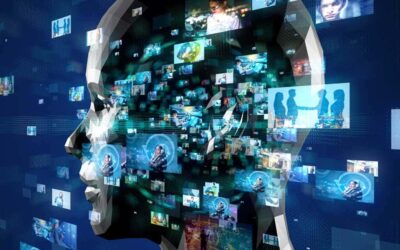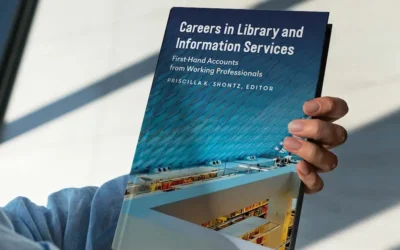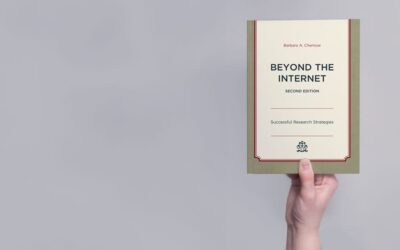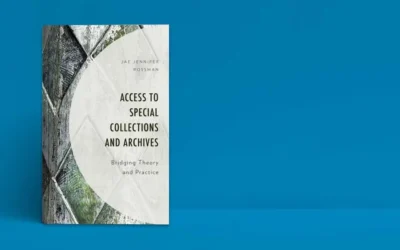How Librarians Can Create Experiences for Learning
Lauren Hays
Our libraries, archives, and museums are often full of interesting resources that we would like more users to discover. These could be one of a kind artifacts, original manuscripts, journals, or other material your organization specializes in. Often, for people to want to learn and engage with a resource there must be an opportunity for them to have an experience.
In a previous job, I was able to observe a lot of user interactions with resources that were on display. I discovered through these observations that people will look at the resources, but rarely spend time reading the plaques or engaging with the content in a meaningful way that leads to real learning. At times, these observations were disappointing, because we wanted more engagement from users/visitors. I subsequently learned that there are many ways to encourage engagement and deeper learning. This can be accomplished in various ways, but my practice is rooted in the theory of Experiential Learning by David Kolb. He wrote that, “learning is the process whereby knowledge is created through the transformation of experience” (Kolb, 1984, p. 38).
Experiential Learning for Engagement and Learning
Kolb’s theory of Experiential Learning has four parts:
- Concrete Experience
- Reflective Observation
- Abstract Conceptualization
- Active Experimentation
Concrete Experience
In order to move users to deeper engagement and learning with resources, there must be an opportunity for a concrete experience. This means there must be some active involvement with the resource by the user. In special libraries and museums, this could be reading about the resource, viewing the artifact, listening to a debate, participating in a virtual reality experience, and engaging in a discussion about the resource.
Reflective Observation
Next, it is necessary to provide an opportunity for users to engage in reflective observation. In the context of special libraries and museums, this could be providing a way for users to ask questions, think quietly to themselves, write about what they experienced, or engage in a discussion about the experience.
Abstract Conceptualization
Third, an opportunity for abstract conceptualization must occur. According to the University of Leicester, “Abstract conceptualization is the process of making sense of what has happened and involves interpreting the events and understanding the relationships between them.” This means visitors to libraries and museums need the opportunity to understand how the content relates to other information they know, to compare and contrast the new information to previously learned content, and to spend time considering how the new knowledge impacts their existing understanding of the world. Practically, this can be accomplished through discussions or simulations. It can also be accomplished through guided questions; in this scenario, visitors are presented with questions that ask them to consider relationships, compare and contrast, and contemplate the impact of knowledge.
Active Experimentation
Finally, for deeper engagement and learning, users must have the opportunity for active experimentation. At this stage, users discover ways they can put what they learned into practice. Visitors need the opportunity to identify ways they can act on their new knowledge. To promote active experimentation, library and museum workers can offer suggestions for putting knowledge into practice or providing specific opportunities for them to try something new.
At this point the cycle begins anew with a concrete experience.
It is important to note that Kolb’s experiential learning cycle is not a strict course. Visitors can enter the cycle at any point. Instead of starting with a concrete experience, they could enter the cycle at the point of reflective observation when they realize there is a gap in their knowledge and decide to go learn more.
For librarians and museum professionals who want to increase opportunities for their users to learn, Kolb offers a practical model.
Recommended Resources
Kolb, D. (1984). Experiential learning: Experience as the source of learning and development. Upper Saddle River, NJ: Prentice Hall.
Moorhouse, N., & Jung, T. (2017). Augmented reality to enhance the learning experience in cultural heritage tourism: An experiential learning cycle perspective. eReview of Tourism Research, 8.
References
Kolb, D. (1984). Experiential learning: Experience as the source of learning and development. Upper Saddle River, NJ: Prentice Hall.
University of Leicester. (n.d.). David Kolb. Retrieved from https://www2.le.ac.uk/departments/doctoralcollege/training/eresources/teaching/theories/kolb
Lauren Hays
Lauren Hays, PhD, is an Assistant Professor of Instructional Technology at the University of Central Missouri. Previously, she worked as an Instructional and Research Librarian at a private college in the Kansas City metro-area. Prior to working in higher education, she was employed by the National Archives and Records Administration and worked as an intern at the Harry S. Truman Presidential Library & Museum. Please read more on Lauren’s skills for special librarians, and you may want to take a look at Lucidea’s powerful ILS, SydneyEnterprise.
Similar Posts
AI and the Transformation of Information Literacy
Due to the rise of artificial intelligence (AI), information professionals must evolve their teaching and training approaches as technology reshapes the information landscape, because AI has transformed what it means to be information literate.
Interview with Technical Services Librarian Becky Givens
Becky Givens is a Technical Services Librarian featured in the book Careers in Library and Information Services, which includes a section on careers in special libraries where librarians describe the work they do in various settings. My interview with Becky is below.
Interview with the Author: Dr. B. Chernow on Going Beyond the Internet
Special librarians know searching the Internet answers specific questions, but you miss or misinterpret information if you only consult the Internet.
Interview with Author and Librarian Dr. Jae Rossman on Special Collections and Archives
Dr. Jae Rossman wrote Access to Special Collections and Archives, available now from Rowman and Littlefield. The book is an excellent resource for special librarians who work with special collections and archival materials.




Leave a Comment
Comments are reviewed and must adhere to our comments policy.
0 Comments